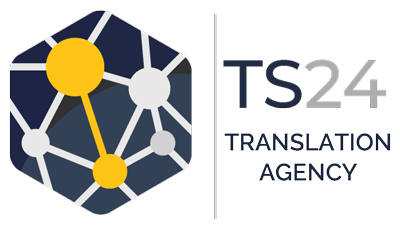How technology affects the translation industry
Over the past years, the demand for translations services has increased considerably. Business globalisation can be considered the main reason behind this phenomenon, as it has increased the opportunities for international trade and opened new markets for many different types of businesses on every corner of the world.
In order to be competitive and keep up with this increase in demand for translation services, providers now need to produce high quality translations within very tight deadlines, which could become a real challenge if it was not for the help of technology.
How can computer-assisted translation tools help translators?
The history of CAT tools dates back to the Cold War years. During this time, it was crucial to translate the information gathered by the Intelligence Services without any delays. This is how translation technology was born. The first machine translations were financed by the United States and the Soviet Union, and the first translations using this new technology were carried out in specialised research centres.
Despite the funds allocated for this new way of translating and the initial enthusiasm, the results were not as expected and at the beginning of the 70’s a new approach was suggested. The next translation machine to be invented should facilitate the work of the human translator and not provide an automatic translation, as it was the case until then.
Modern CAT tools do not have a ready-made bilingual dictionary or a program based on automated machine translation. The “database” is all created by the translator every time he or she works on a translation and revises the work. The search for a term using a CAT tool means that the translator goes through all the previously created translation memory, which can be slower than machine translation but more accurate and consistent.
The use of CAT tools offers many benefits to translators, including:
-
Increase of production
-
Consistency of style and terminology
Translators build their own translation memory as they work so with time their efficiency will get better and better. The translator will work on creating terminology cards and glossaries, being able in many cases to add context, images and examples.
- Some of the most popular CAT tools will help the translator to count segments, words and units, compare portions of pre-translated text and new text and analyse it in order to charge a fair price for the work.
- Most CAT tools will allow the translator to work with different formats such as PowerPoint, Excel, Visual Studio, HTML, Java, etc., without changing the original format or the layout in case there are special page breaks. This is a huge advantage for the translator, as his or her main focus will be the translation itself.
What are some of the features CAT tools have?
Translators can find nowadays a number of specialised software products that can help them speed up their translations and increase the level of quality. The most common and important features CAT tools have are:
-
Translation Memory
This is a linguistic database which main purpose is to capture translations as you work, so you can use this information in the future. Within the translation memory you will find all your previous translations saved in translation units (source and target language pairs), so you can reuse any of that information and save time, as you don’t have to translate the same expression or sentence again. This way you will be able to complete your projects faster, take more work and increase your income.
-
Terminology Management Tool
This tools works in a similar way to a database and allows the management of terms and rules that have been approved both in the source and target languages. The terminology management tool is usually used with the translation memory in order to ensure consistency in the translation.
Are all CAT Tools the same?
When it comes to CAT tools, one size does not fit all. Although the principle of computer-aided translation software is based on the creation of a memory and the segmentation of the text, there are tools that are best suited for different applications, meeting different requirements.
Among the most popular tools are Trados, Wordfast and DéjàVu. While all these three provide the same service, they have some differences that make them more or less suitable for different types of translations. Take for example Wordfast, which is a suite of Microsoft macros and not a program. Due to being based on Word, this will be a tool more suitable for a beginner because of its ease of use. However, this same ease of use reduces its performance because it handles fewer formats, making it less flexible. In contrast, translators working on more complex assignments that have special texts will prefer to use Trados and translators who have to work on many files with different kinds of formats will prefer to use DéjàVu because of its customisability and stability.
Are all translators happy with Translation Technology?
Although translation technology offers many advantages to translators, there are many professionals in the industry that are not so happy with it and the way it has affected the whole translation industry. Three of the main reasons are:
-
Machine translations create the wrong perception of translation
When free automated machine translations services appeared online, such as Google Translate, the whole professional translation industry was affected. It made people realise there is a need for translation and that it is possible to get it quickly, which incremented the demand for the services. However, by providing an automated service free of charge it created the perception that quality translation services are much easier than they really are.
-
Quality is the main priority of the translator
Sometimes this is not the same priority as clients, due to the lack of knowledge of the target language, the intended use of the text to be translated or the budget restrictions they may have. In these cases clients tend to think that translation technology will offer them the low cost quick fix they are looking for, in many cases price being more important than quality. However, this is not the case for translators, as quality is their main priority.
-
Good writing
In many cases, translation memory tools are an impediment to good writing. Although there are advantages to the segmentation approach, it definitely does not encourage smooth writing because translators only work on one segment at the time, making it difficult to create a text with a cohesive tone.
We can see the advances of technology every day and it is possible that technology will replace translators and interpreters one day. The good news is that this will not come anytime soon. We at Language Reach think that some of the reasons behind this include:
-
The quality of translation is subjective
Human translation varies according to the proficiency and experience of translators. Even the best translators will not necessarily come with the same translation of a text. So if machines could produce translations with human translation quality, which quality would they emulate?
-
To get a really good translation is extremely difficult
Being proficient in two languages doesn’t make you a translator. The same applies to translation technology in which the idea of creating equivalencies across languages will give you good translations that will recreate the texts in the target language and have the same impact as in the source language.
-
Large number of languages around the world
There are between 6000 and 7000 languages in the world today and let’s say that from those, 1000 languages have some economic significance. It means that in order for translation technology take over humans the technology would need to develop all these languages. Bearing in mind that Google Translate only supports around 80 languages, there is still a very long road ahead.
-
Context is paramount when it comes to translation
Depending on the context, words can have many different meanings. The challenge is for a machine to learn each of the meanings for every word that exists in any given pair of languages. Humans use context in order to figure out the meaning of the words, we don’t think of them as single words but how they interact with each other and these combinations are in constant change because of human creativity. This is something that machines can’t simply keep up with.



